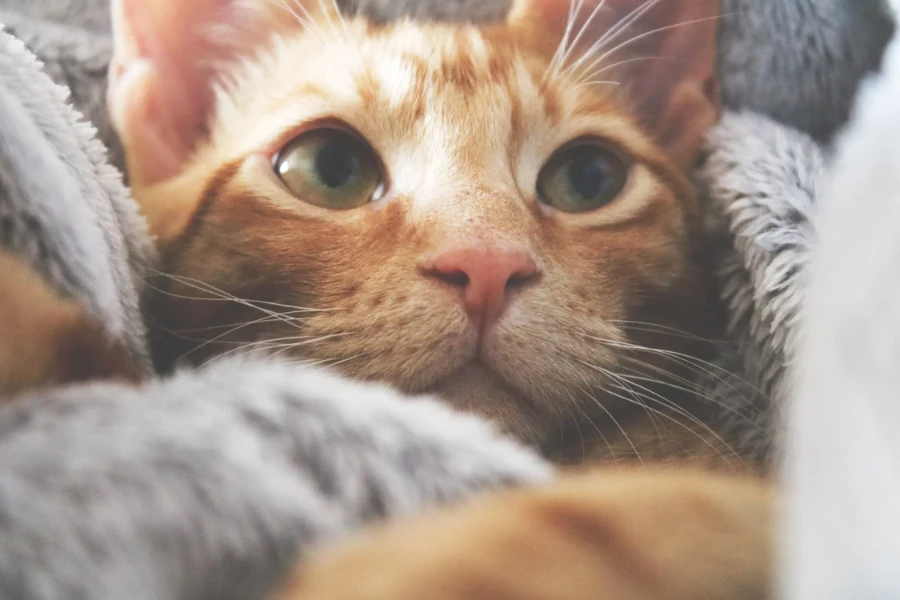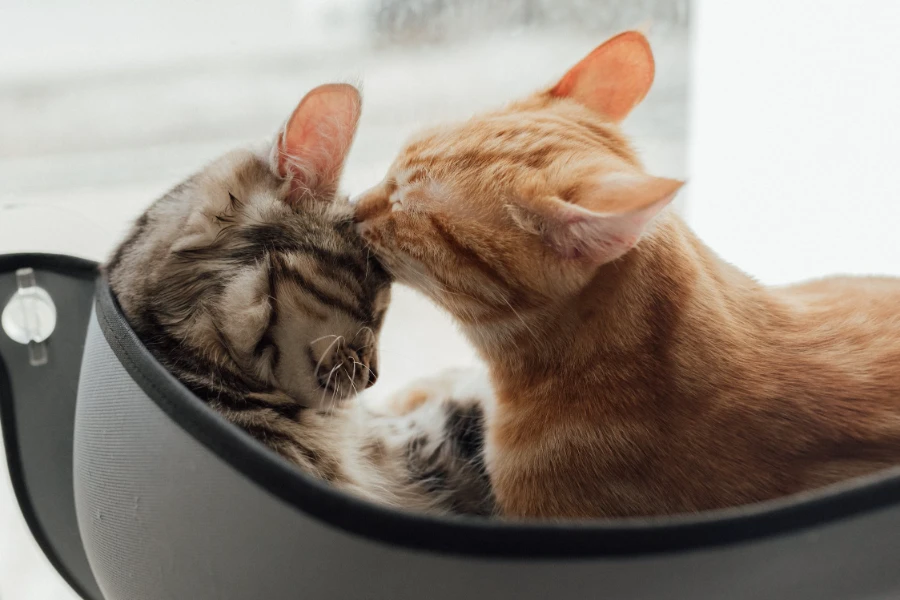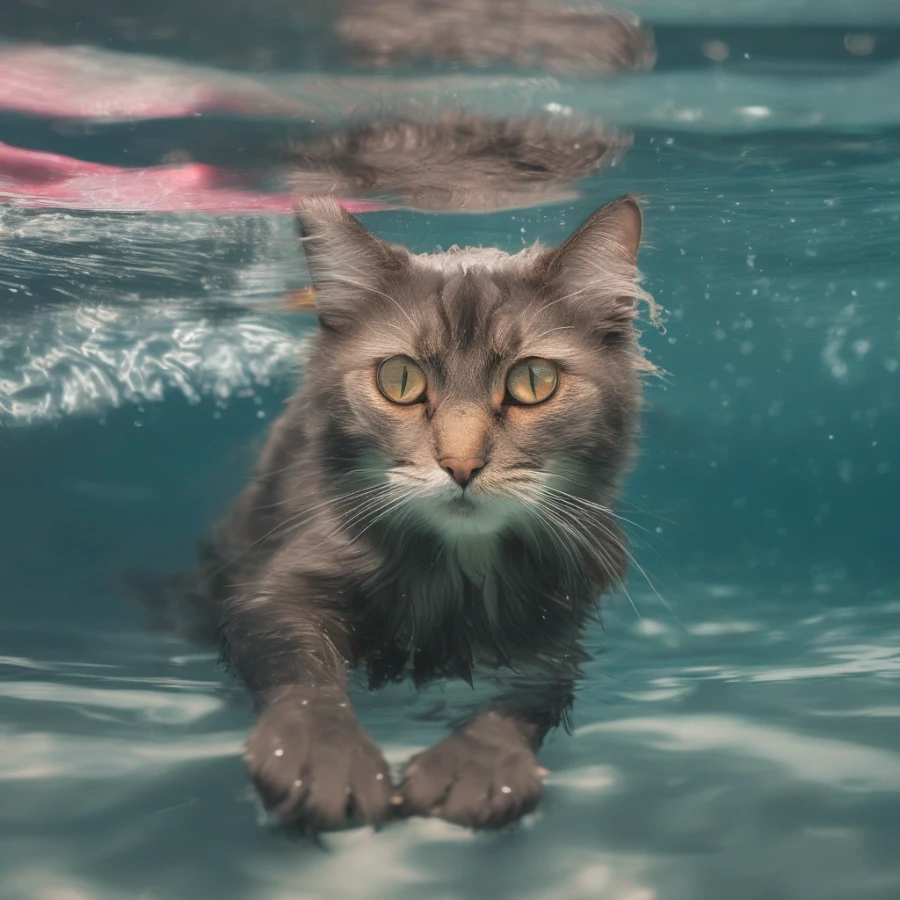Why Is My Cat So Clingy? 5 Possible Reasons

Published by: Tatsiana Korshik
Time to Read: 7 Min

Why Is My Cat So Clingy?
If you find your feline friend constantly by your side, there are several reasons why your cat might be exhibiting clingy behavior. Understanding these factors can help you create a harmonious environment for both you and your beloved pet.1. Seeking Attention and Affection Your cat may be craving attention and affection. Cats, known for their independent nature, can become clingy when they feel the need for companionship. Spending quality time with your cat through play and cuddles can help address this.
2. Health Concerns Clinginess in cats can sometimes indicate underlying health issues. Cats may seek comfort and security when they are unwell. If your cat's behavior changes suddenly, it's advisable to consult with a veterinarian to rule out any health concerns.
3. Changes in Routine or Environment Cats are creatures of habit, and disruptions to their routine or environment can make them anxious. Moving to a new place, changes in your schedule, or even rearranging furniture can trigger clingy behavior as your cat seeks reassurance and familiarity.
4. Stress and Anxiety Cats can experience stress and anxiety, leading to clinginess. Common stressors include the introduction of new pets, loud noises, or changes in the household. Providing a secure and quiet space for your cat can help alleviate stress.
5. Lack of Stimulation Boredom can contribute to clingy behavior. Ensure your cat has enough toys and mental stimulation to keep them engaged. Interactive play and puzzle toys can help channel their energy in a positive way.
6. Age-Related Changes As cats age, they may become more dependent on their owners. Senior cats, in particular, might seek closeness for comfort. Be attentive to your cat's changing needs as they grow older.
7. Attention-Seeking Breeds Certain cat breeds are naturally more inclined to seek attention. Breeds like Siamese and Ragdoll cats are known for their affectionate nature and may exhibit clingy behavior as part of their personality.
Understanding the reasons behind your cat's clinginess allows you to address their needs appropriately. Whether it's providing more attention, addressing health concerns, or creating a stable environment, catering to your cat's well-being can strengthen the bond between you and your furry companion.
Signs of Clinginess in Cats
If you suspect that your feline companion is displaying clingy behavior, here are some key signs to help you identify their need for closeness:Constant Proximity: Clingy cats prefer staying close to their owners, following them from room to room and seeking physical closeness.
Persistent Purring: An increase in purring, especially when in your presence, can be a sign of clinginess. Your cat may use purring as a way to seek attention and express contentment.
Attention-Seeking Actions: Clingy cats actively seek your attention through actions like pawing, head-butting, or rubbing against you. They may display these behaviors to ensure they are noticed.
Desire for Affection: A clingy cat craves physical affection. They may demand more petting, cuddling, or lap time than usual.
Vocalization: Some clingy cats become more vocal, meowing persistently to communicate their presence and desire for interaction.
Anxiety when Alone: Clingy cats may exhibit signs of distress or anxiety when left alone. This can include vocalizing, pacing, or displaying behaviors indicative of stress.
Resistance to Separation: These cats may show reluctance to be separated from their owners, attempting to follow them and expressing displeasure when doors are closed.
Preference for Your Company: Clingy cats may favor your presence over others in the household. They might seek you out and become distressed if they cannot find you.
Physical Contact Dependency: Enjoying constant physical contact, such as sitting on your lap or sleeping close to you, is a common sign of clinginess.
Discomfort with Changes: Clingy cats may struggle with changes in routine or environment. They find security in familiarity and may become more dependent during periods of change.
Clingy Cat: Is It Normal?

Clingy behavior in cats is considered normal and can be commonly observed. Cats may exhibit clinginess for various reasons, including the desire for attention, feelings of insecurity, or a need for affection. Some cats naturally show more affection and enjoy close proximity to their owners.
If you notice a sudden change in your cat's behavior, it's important to rule out potential underlying health issues causing discomfort or distress. Providing love, attention, and maintaining a comfortable environment can help address clingy behavior in cats.
It's crucial to understand and respect each cat's unique personality and preferences, as levels of clinginess can vary. Veterinarians or professional animal behaviorists can offer valuable insights if you have specific concerns about your cat's behavior.
How to Fix Clinginess in Cats
Addressing clinginess in cats involves understanding the underlying reasons and taking appropriate steps. Begin by ensuring your cat is in good health, ruling out any potential medical issues. Provide mental and physical stimulation through interactive play and engaging toys to alleviate boredom and excess energy.Establish a consistent routine to create a sense of security for your cat. Gradually encourage independence by creating designated spaces with cozy beds or hiding spots. Use positive reinforcement to reward independent behavior, reinforcing the idea that being alone is positive.
Avoid reinforcing clinginess by not responding to attention-seeking behavior. Instead, reward your cat when they display independence. Consider consulting with a veterinarian or professional animal behaviorist for personalized advice based on your cat's specific needs and behaviors.



